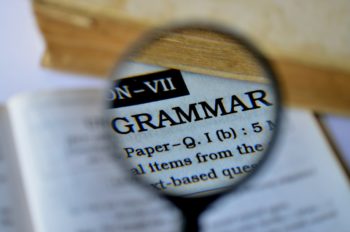An Aimsir Láithreach – The Present Tense Posted by Bridgette on Apr 22, 2021 in Grammar, Irish Language
An Aimsir Láithreach – The Present Tense
Leathan: a, o, u. Caol: e, i.
Remember, broad goes with broad, slender goes with slender. We will see this below.
__________________________________________________________________________
1st conjugation endings
1st Conjugation verbs have one syllable and the endings will be added to the verb.
Some examples of verbs that are 1st conjugation: rith (to run), dún (to close), bris (to break), and fan (to wait).
Slender endings: im, eann, imid
rith – to run
rithim – I run
ritheann tú/sé/sí – you/he/she runs
rithimid – we run
ritheann sibh/siad – you all/they run
___________________________________________
bris – to break
brisim – I break
briseann tú/sé/sí – you/he/she breaks
brisimid – we break
briseann sibh/siad – you all/they break
Broad endings: aim, ann, aimid
dún – to close
dúnaim – I close
dúnann tú/sé/sí – you/he/she closes
dúnaimid – we close
dúnann sibh/siad – you all/they close
___________________________________________
fan – to wait
fanaim – I wait
fanann tú/sé/sí – you/he/she waits
fanaimid – we wait
fanann sibh/siad – you all/they wait
2nd conjugation endings
2ns conjugation verbs have two or more syllables. If they end in igh, or aigh, remove those letters, and add the endings from the list below. If they end in il, ir, in, or is, the second syllable is condensed, before adding the appropriate ending.
Some examples of 2nd conjugation verbs are: éirigh (to get up), ceannaigh (to buy), eitil (to fly), freagair (to answer).
Slender endings: ím, íonn, ímid
éirigh – to get up
éirím – I get up
éiríonn tú/sé/sí – you/he/she gets up
éirímid – we get up
éiríonn sibh/siad – you all/they get up
___________________________________________
eitil – to fly
eitlím – I fly
eitlíonn tú/sé/sí – you/he/she flies
eitlímid – we fly
eitlíonn sibh/siad – you all/they fly
Broad endings: aím, aíonn, aímid
ceannaigh – to buy
ceannaím – I buy
ceannaíonn tú/sé/sí – you/he/she buys
ceannaímid – we buy
ceannaíonn sibh/siad – you all/they buy
___________________________________________
freagair – to answer
freagraím – I answer
freagraíonn tú/sé/sí – you/he/she answers
freagraímid – we answer
freagraíonn sibh/siad – you all/they answer
__________________________________________________________________________
Here’s a list of some more Irish verbs. Can you tell if they are 1st or 2nd conjugation verbs, broad or slender, and then conjugate them in the comments? Good luck, ádh mór!
Féach – to look
Éist – to listen
Déan – to do
Buail – to hit
Glan – to clean
Scríobh – to write
Caith – to throw
Ith – to eat
Féach – to look
Éist – to listen

Build vocabulary, practice pronunciation, and more with Transparent Language Online. Available anytime, anywhere, on any device.





Leave a comment: